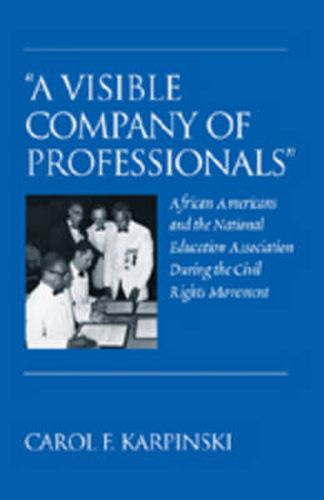Readings Newsletter
Become a Readings Member to make your shopping experience even easier.
Sign in or sign up for free!
You’re not far away from qualifying for FREE standard shipping within Australia
You’ve qualified for FREE standard shipping within Australia
The cart is loading…






African American educators shaped a role for themselves in the larger civil rights movement by striving for inclusion, on equal footing, in the National Education Association (NEA). This book explores the relationship between the NEA, the nation’s largest teacher organization, and the predominately black American Teachers Association, and illustrates how African American educators helped to redefine the NEA’s core ideology to include the support of policies, practice, and politics that promoted educational equity for children and educators who have been historically marginalized. Examining heated debates in African American communities and in the NEA, and the immediate and long-term effects of inclusion on educators and public school children, this book reveals teacher associations as something more than labor unions and educators as activists for educational equity, while it documents the perils, disappointments, and advantages of professional cohesion. The book’s documentation of leadership in particularly challenging settings fills a void in literature for teacher preparation and educational leadership programs.
$9.00 standard shipping within Australia
FREE standard shipping within Australia for orders over $100.00
Express & International shipping calculated at checkout
African American educators shaped a role for themselves in the larger civil rights movement by striving for inclusion, on equal footing, in the National Education Association (NEA). This book explores the relationship between the NEA, the nation’s largest teacher organization, and the predominately black American Teachers Association, and illustrates how African American educators helped to redefine the NEA’s core ideology to include the support of policies, practice, and politics that promoted educational equity for children and educators who have been historically marginalized. Examining heated debates in African American communities and in the NEA, and the immediate and long-term effects of inclusion on educators and public school children, this book reveals teacher associations as something more than labor unions and educators as activists for educational equity, while it documents the perils, disappointments, and advantages of professional cohesion. The book’s documentation of leadership in particularly challenging settings fills a void in literature for teacher preparation and educational leadership programs.